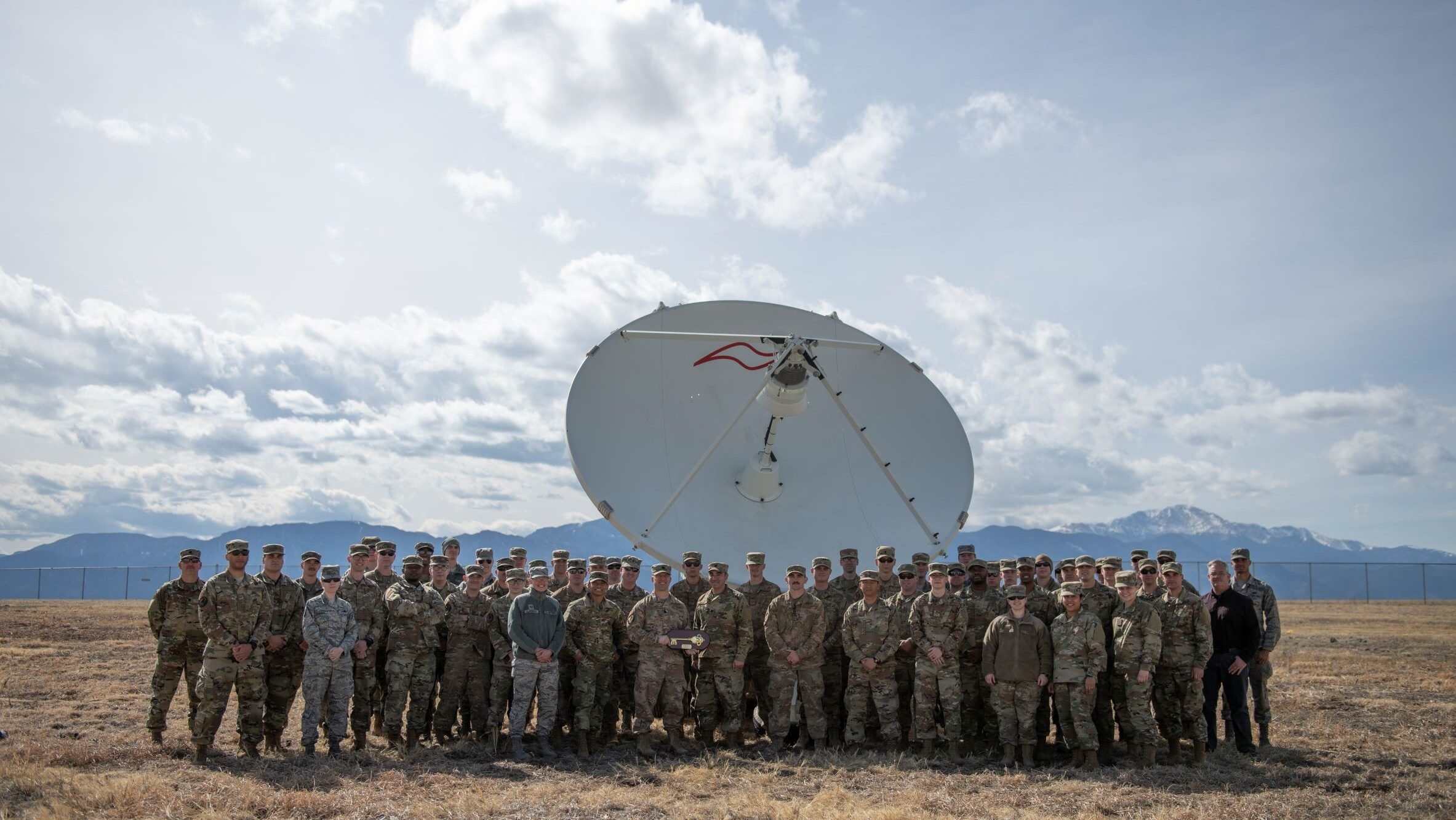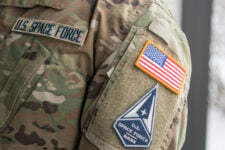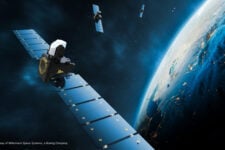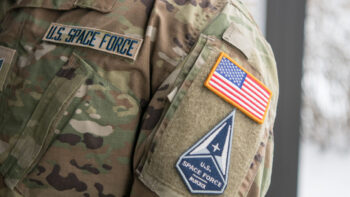
The Counter Communications System Block 10.2 was declared initially operational in March 2020. It is now the responsibility of Space Force Delta 3. (Air Force photo by Airman First Class Andrew Bertain.)
WASHINGTON — The Space Force’s new(ish) Integrated Mission Delta (IMD) responsible for electromagnetic warfare (EW), Delta 3, is working to expand the portfolio of weapon systems within its area of responsibility, as well as to bring on board intelligence, surveillance and reconnaissance experts from elsewhere in the service, according to the unit’s commander.
Delta 3 was stood up in September as one of two prototype IMDs underneath Space Operations Command designed to bring together in one shop both operational training and sustainment of space systems — activities that traditionally have been undertaken under separate commands. (Deltas are the Space Force equivalent of Air Force wing and group commands.) It includes the service’s 4th, 5th and 16th Electromagnetic Warfare Squadrons and the 3rd Combat Training Squadron.
The IMD construct is allowing the Space Force to get trained personnel and capabilities to the field faster, and to more quickly respond to system maintenance problems, Col. Nicole Petrucci said.
At the moment, Delta 3 has been given responsibility for training operators and sustaining for only one Space Force EW system, the Counter Communication System (CCS)10.2, Petrucci told the Air Force Association today.
“It’s just for CCS, but we’re expanding it to our other systems as well,” she said.
CCS is the Space Force’s only admitted offensive space weapon, a ground-based radio frequency jammer designed to disrupt enemy satellite communications. CCS was first fielded by the Air Force in 2004, produced by prime contractor L3Harris. The latest upgrade, block 10.2, was declared to have reached initial operational capability in March 2020.
“In Delta 3 we specifically focus on satellite communications, but there’s many other types of electromagnetic warfare,” Petrucci explained. For example, she said another Space Force unit is responsible for handling laser-based systems.
Next in line, Petrucci said, is the Bounty Hunter system — which she explained is in the process of being transferred to Delta 3 from the Air Force Life Cycle Management Center. She did not, however, provide an estimated timeframe for completion of the transfer.
Bounty Hunter is designed “to detect, characterize, geolocate and report sources” of electromagnetic interference with US military and commercial satellites, according to a fact sheet published by the 16th Electromagnetic Warfare Squadron. A first Bounty Hunter was deployed by the Air Force to US Indo-Pacific Command in 2018; a second to US Central Command in 2019.
Meanwhile, Petrucci said, Delta 3 is still in the process of finalizing the transfer of the 71st Intelligence, Surveillance and Reconnaissance Squadron Detachment 3 from Space Force Delta 7. Once the “paperwork is actually signed,” that move will allow Delta 3 to embed an intelligence professional “as part of that force package that goes out the door” to US combatant commands to perform operational duties, she explained.
“We say this is the longest adoption in history,” she joked.
Looking into the future, Petrucci said she is most excited by the possibilities for upgrading systems for protecting US satcom from interference and for disrupting enemy satcom by automating processes through the use of artificial intelligence and machine learning.
“I am very interested in automation. For these systems, there are certain tasks in the systems that we have that are very manual,” she said. “If I can make the science of space automated, then the art of space can be done by the warfighter, and that allows us to get at some of those unique targets, some of those very specific things, if we take care of some of those lower level tasks through automation. I think that’s what I’m most excited about.”
New details emerge of Russia’s potential nuclear space weapon
“The United States has been aware of Russia’s pursuit of this sort of capability dating back years, but only recently have we been able to make a more precise assessment of their progress,” said Mallory Stewart, State Department assistant secretary for the Bureau of Arms Control, Deterrence, and Stability.


























